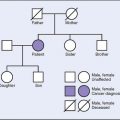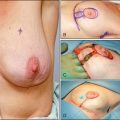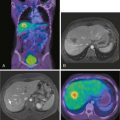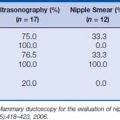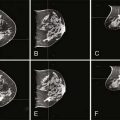25 Conclusion
We all know the statistics on the impact that breast cancer has on our population. Today, 1 in 8 women will experience breast cancer in her lifetime, and 1 in 33 women will die of the disease. In addition, in the United States, approximately 2000 men are diagnosed with breast cancer annually. Even more profound is the increase in the number of women living with breast cancer. Currently more than 2 million women in the United States have been successfully treated for breast cancer and are going on to live full and active lives subsequent to their treatment.1 This statistic represents the tremendous impact that public awareness and education, early detection and diagnosis, and research into improved therapies can have on decreasing the burden of disease and improving quality of life. The impact that grassroots organizations and patient advocacy have had on increasing awareness and directing funding to important research initiatives serves as a model for those wishing to make a similar impact on other diseases that negatively affect the public good.
The importance and impact of well-conducted research trials are seen throughout the chapters of this book. Clinical trials conducted regarding prevention, imaging and early detection, local and systemic therapies, and quality of life have defined and redefined optimal care for patients and providers grappling with this disease. Funding for these clinical trials comes from many sources, including government funding agencies and private foundations. Recent financial reports indicate that annually the National Cancer Institute (NCI) sponsors $573 million in breast cancer research funding, the Department of Defense $138 million,2 the Komen Foundation $64 million,3 and the Avon Foundation $14 million.4 Many other organizations large and small provide direct and indirect support for breast cancer research as well as additional monies to support education, public awareness, and direct patient care services. A significant portion of these funds comes from the generous donations of private citizens, many of whom have had personal experience with breast cancer and who want to do their part to help others in their community who have been touched by this disease.
The results of these clinical trials have moved breast cancer treatment from the early 1900s, when most patients received a Halsted radical mastectomy for local control, to this century, when many women can preserve their breast with minimal cosmetic change. This has come not at the detriment of survival but with improved survival rates. Most women diagnosed today can expect a greater than 70% 10-year survival rate; for those with the earliest stages of even invasive disease, a 10-year survival rate of over 90% is the norm. Surgeons have a wide armamentarium of options available to provide optimal local control as well as cosmetic outcome. Larger tumors can be converted to smaller tumors amenable to breast conservation with neoadjuvant chemotherapy. Oncoplastic techniques can reshape the breast to improve overall cosmesis in the breast conservation setting. Patients who require or choose mastectomy have a variety of reconstructive options available that can recreate the breast mound in a fashion that offers a very similar size, shape, and texture to the native breast. The future may bring ever more focal destruction and ablation techniques that will further minimize the cosmetic consequences of surgical breast cancer therapy.
Learning from the experience of these highest-risk individuals, however, will lead to further improvements in risk stratification that will help us define and focus interventions on the women most likely to be affected by breast cancer. Most women who develop breast cancer have no known identifiable risk factors. For these women we currently have a one-size-fits-all approach to screening and early detection. Whatever your response to the recently published U.S. Preventive Services Task Force (USPSTF) recommendations on mammographic screening,5 the clear message is that most women will never get breast cancer, and identifying the women with an elevated risk will increase the yield and decrease the economic and noneconomic costs of screening. Targets that show promise include proliferative and atypical changes identified on benign breast biopsy, the quantification of breast density, and the influence of lifestyle markers such as obesity and sedentary lifestyle on subsequent breast cancer development.
Further definition of women at risk allows us to institute specific interventions such as chemoprevention and nutritional and lifestyle changes on the women most likely to benefit. Current prevention recommendations have been arbitrarily set at a 1.67% 5-year risk calculated using the Gail model. More specific modeling constructs as well as tailored prevention strategies are needed. Underutilization of currently available chemoprevention indicates that the side-effect profile of future medications must be much smaller than that demonstrated by tamoxifen and raloxifene if women are going to adopt them as part of their prevention strategy. Additional emerging strategies that include exercise and weight control also show promise as providing some reduction in breast cancer incidence, although they face the uphill battle of any intervention that requires significant behavior modification.
1 NCI Office of Women’s Health Research on Cancers in Women. http://women.cancer.gov/research/breast.shtml.
2 Priority #2: $150 million for the Department of Defense (DOD) Peer-Reviewed Breast Cancer Research Program (BCRP) for Fiscal Year 2009. National Breast Cancer Coalition. www.stopbreastcancer.org/index.php?option=com_content&task=view&id=333.
3 Komen Foundation Annual Report 2006–07. ww5.komen.org/uploadedFiles/Content_Binaries/Komen-AR2007.pdf.
4 Avon Foundation 2007 Financial Report. www.avoncompany.com/women/avonfoundation/2007_grants.pdf.
5 Screening for Breast Cancer. United States Preventive Services Task Force, Agency for Health Research and Quality. www.ahrq.gov/clinic/USpstf/uspsbrca.htm#summary. published November 19, 2009. Accessed February 20, 2010.
Stay updated, free articles. Join our Telegram channel

Full access? Get Clinical Tree


